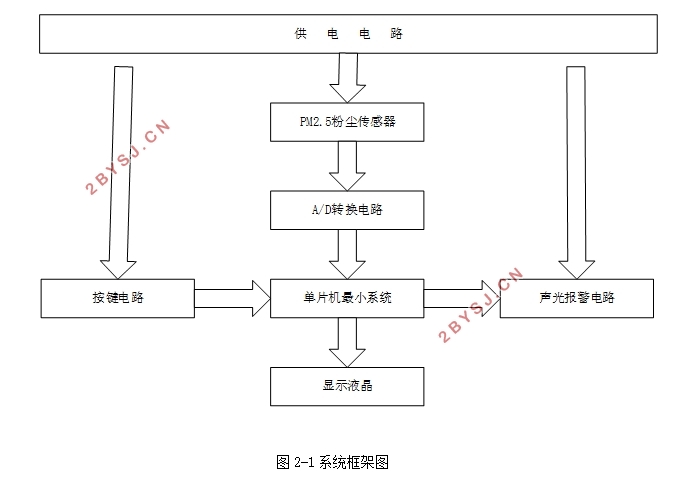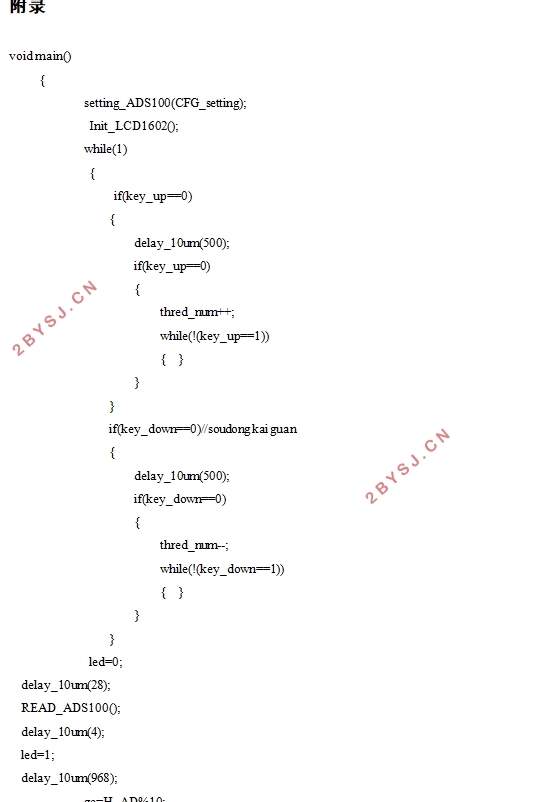便携可充电式PM2.5检测仪设计
无需注册登录,支付后按照提示操作即可获取该资料.
便携可充电式PM2.5检测仪设计(论文10000字)
摘要:当前如何有效的防治雾霾在技术水平上仍然是一个难题。人们更多的是依靠风这大自然的威力来吹散大气中的污染物,不过,在监测雾霾方面,技术上却很有可行性。本设计是将单片机作为控制核心对空气中雾霾颗粒指数进行测量的便携式检测仪。该仪器同传统的仪器一样用传感器监测数据、由AD转换技术转换数据再由单片机处理,这样将三者相结合实现对空气中雾霾颗粒浓度的检测。同时,锂电池被用作电源来实现系统的便携性和充电性能。
事实证明,本设计可以有助于人们对于身边的空气质量进行实时检测,有效的提高了使用者对于空气污染的警觉性。可充电设计可以更有效地改善用户的电池寿命。
关键词:单片机;PM2.5;雾霾浓度;传感器技术
Thedesignofportable rechargeable PM2.5 monitor
ABSTRACT:Nowadays, how to effectively control the haze is still a difficult problem in the technical level. People rely more on wind to blow up pollutants in the atmosphere, but it is technically feasible to monitor smog. This design is a portable detector which is used as the control core to measure the haze particles in the air. The instrument as well as traditional instruments with sensor monitoring data, the AD conversion technology transform the data again by single chip, combining three implementations for the detection of fog particle concentration in the air. At the same time, the lithium battery is used as the power supply to realize the portability and rechargeability of the system.
It has been proved that this design can help people to carry out real-time detection of the air quality around them, and effectively improve the users' awareness of air pollution. The rechargeable design improves the user's endurance more effectively.
KEY WORDS: MCU; PM2.5; Smog concentration; Sensor technology


目录
第一章概述 1
1.1 设计的依据及其意义 1
1.2该设计的设计原理 1
1.3论文安排 2
第二章系统总体设计及模块介绍 4
2.1系统总体设计 4
2.2相关模块及芯片介绍 5
2.2.1 单片机的选择 5
2.2.2传感器模块的选择 6
2.2.3 ADS1100模数转换芯片 7
2.2.4 液晶显示模块 9
2.2.5 锂电池充放电芯片的选择 12
第三章电路设计 14
3.1单片机最小系统设计 14
3.2 程序下载与调试电路 15
3.3 AD转换电路 16
3.4 传感器模块电路 16
3.5 显示屏电路 16
3.6 报警电路 17
3.7 锂电池供电与充电电路 18
第四章软件部分设计 19
4.1开发环境 19
4.2程序设计 19
4.2.1主程序设计 19
4.2.2 声光报警部分 20
第五章系统调试 21
5.1硬件的调试 21
5.2 软件的调试 21
5.3 程序的下载 21
第六章测试与分析 21
6.1系统实物图 21
6.2 操作流程 21
6.3 实际效果与数据对比 21
6.4存在的不足与展望 21
第七章总结与展望 21
参考文献 21
致谢 21
附录 21
